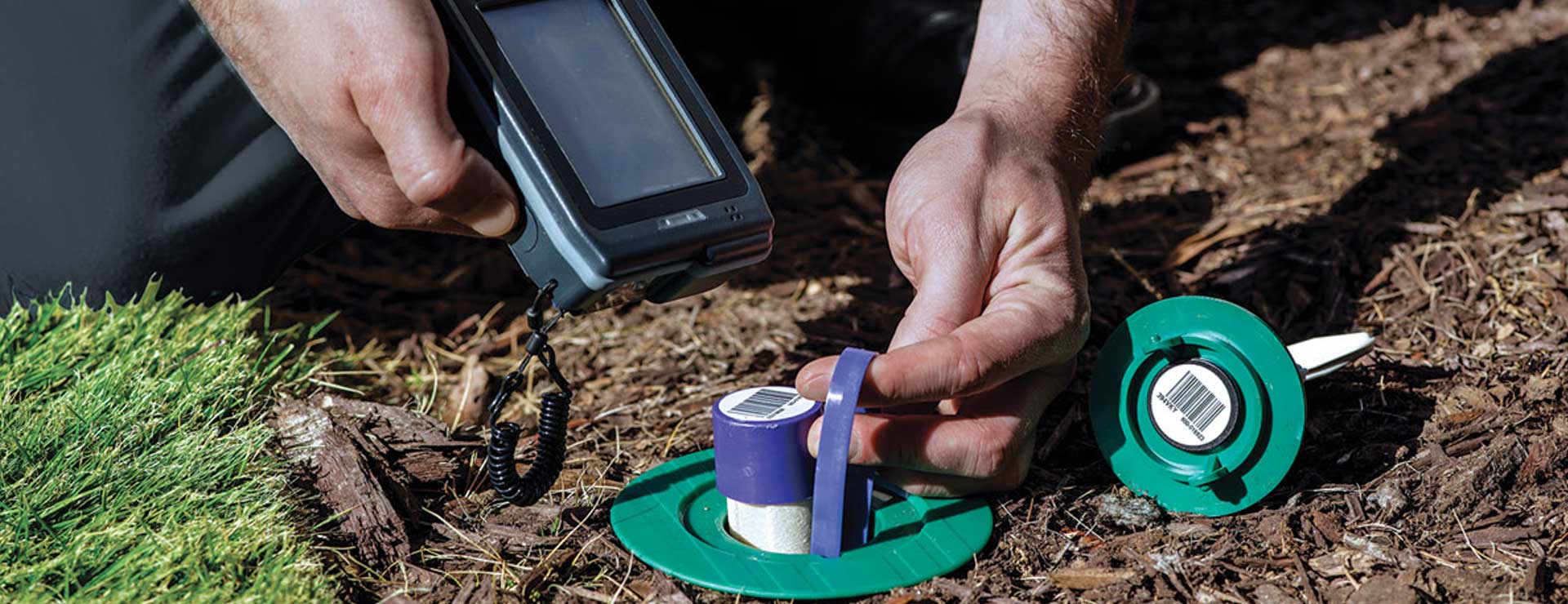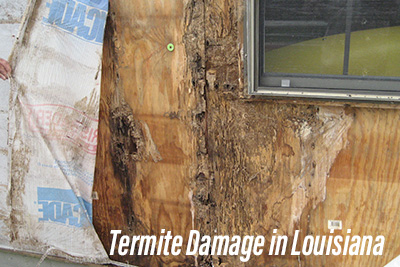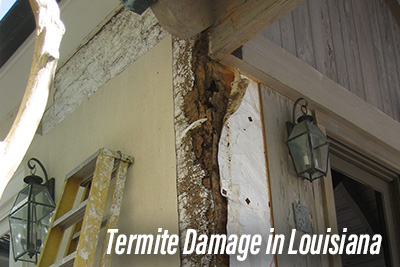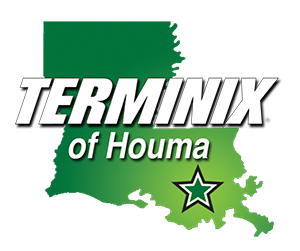
Frequently Asked Questions

At Terminix Pest Control of Houma, Louisiana, we are committed to ridding homes, commercial spaces, and industrial buildings from pests — and keeping them pest-free. We serve clients across Southeastern Louisiana communities including Houma, Chauvin, Montegut, Bourg, Grand Calliou, Bayou Dularge, Gray, Schriever, Bayou Blue, and Gibson; Lafourche Parish, including Thibodaux, Raceland, Lockport, Larose, Cut Off, Galliano, Golden Meadow, Port Fourchon, and the community of Grand Isle.
To help answer your pest control questions, the experts at Terminix have compiled this list of exterminator FAQs. If you have further questions, please don’t hesitate to call Terminix Pest Control of Houma to speak to one of our caring experts!
Q. WHAT ARE THE MOST COMMON SIGNS OF TERMITES?
A. Because so much of the damage caused by termites is within the inner walls of a structure, it can be difficult to know if you have a termite problem. However, there are three warning signs to help you determine if you have a termite problem.

TERMITES, DEAD OR ALIVE
Winged termites are often the first sign of a subterranean termite infestation. Swarming termites are attracted to light and are often found near windows, doors, vents and light fixtures. Experiencing a termite swarm is the #1 sign that your property has a termite problem. Worker termites are small, light-colored insects that move quickly when exposed to light. They are also the family members that cause the most damage to a structure. Even if you haven’t seen signs of termites, check windows, heating vents, doors, sinks and bathtubs for dead termites or termite wings.
MUD TUBES
Mud tubes provide shelter for termites and have a muddy, flattened appearance approximately the width of a drinking straw. Look for mud tubes along cracks, beneath flooring, around baseboards, on pipes, piers, chimneys, behind siding, plumbing and other fixtures. Mud tubes may also extend over concrete foundations and other exposed surfaces.
HOLLOW WOOD
Another way to check for termites is to tap wood along the walls, baseboards and windowsills every few inches with a screwdriver handle. Damaged wood will sound hollow and, if the area is extremely damaged, the handle may break the wood’s surface. If the area is active, you may see worker termites inside. Dark areas or blisters in wood flooring are an indicator of a subterranean termite infestation. Because subterranean termites are preventable, it is a good idea to have your property regularly inspected by a trained specialist.
Q. HOW CAN I IDENTIFY A TERMITE?
A. Termite workers are pale, soft-bodied insects about one-quarter of an inch or less in length. They appear to have a head and body because their thorax is broadly joined to their abdomen. Their antennae are straight.
Termites are mistakenly called white ants but are not ant-like in appearance. Ants are usually heavily pigmented and have three distinct body regions: head, thorax and abdomen. Ants also have a very narrow or pinched “waist,” and their antennae are “elbowed.”
Winged termites, also known as swarmers, have pigmented bodies with broad waists and two pair of wings that are equal in size and shape. Subterranean termite swarmers have bodies about one-quarter of an inch in length. The swarmers quickly shed their wings after a brief flight. Winged ants, on the other hand, have pinched waists and two pair of wings that differ in size and shape (front are much larger).
Q. DO TERMITES REALLY EAT WOOD?

A. Yes, termites really eat wood. In nature, termites play a useful role helping wood be recycled to the soil as humus, an organic material that provides nutrients for plants and increases the ability of soil to retain water.
Using bacteria, protozoa and microbes that live inside their stomachs, termites can digest cellulose, the main constituent of wood. They are extremely well organized and persistent in their search for new food sources. Contrary to what one might think, they will eat anything containing cellulose – wallpaper, books, boxes, carpet backing, drywall and even furniture.
Q. HOW LONG DO TERMITES LIVE?
A. A worker termite may live from one to two years. A queen termite may live for decades.
Q. IS IT POSSIBLE TO GET RID OF COCKROACHES AND KEEP THEM FROM COMING BACK?
A. Cockroaches can be eliminated from a home, but reinfestations can occur depending on the species involved and where your home is situated.
Outdoor cockroaches, like the large smoky browns in the Southeast or Oriental cockroaches in the Northeast and Midwest, may continually try to enter a home from the outside.
Regular exterior cockroach control, in addition to sealing outside cracks and holes in walls, can help limit such invasions.
A Terminix specialist can look for any conditions that might contribute to cockroach infestations and make recommendations on how to get rid of cockroaches.

Terminix Pest Control of Houma
6610 W Main St.
Houma, LA 70360
Mailing Address:
PO Box 6001
Houma, Louisiana 70361-6001
Answering Service and On-Call Personnel Available 24/7
Phone: (985) 868-3920
Toll Free: (866) 868-3920
Fax: (985) 868-3926
Hours
Monday – Friday
7:00 am – 5:00 pm
